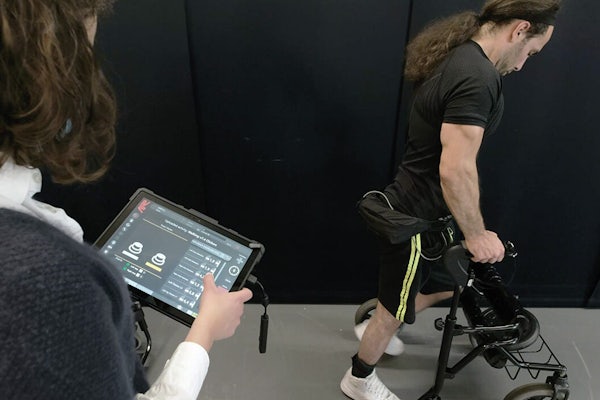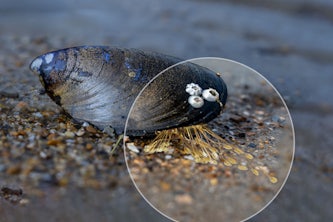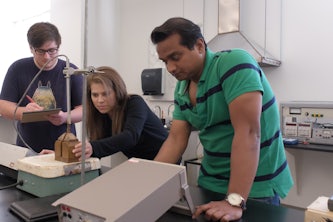Spinal stimulation gives some people with paralysis more freedom
Electrodes help reroute nerve signals around trouble spots

By his count, Michel Roccati is on his third life, at least. In the first, he was a fit young man riding his motorcycle around Italy. A 2017 crash in the hills near Turin turned him into the second man, one with a severe spinal cord injury that left him paralyzed from the waist down. Today, the third Michel Roccati works out in his home gym in Turin, gets around with a walker and climbs stairs to visit a friend in a second-story apartment. Today, he says, his life is “completely different than it was before.”
Roccati, age 31, is one of three men who received experimental spinal cord stimulators as part of a clinical trial. All three had completely paralyzed lower bodies. The results have been a stunning success, just as Roccati had hoped. “I fixed in my mind how I was at the end of the project,” he says. “I saw myself in a standing position and walking. At the end, it was exactly what I expected.”
The technology that Roccati and others use, described in the February Nature Medicine, is an implanted array of electrodes that sits next to the spinal cord below the spot severed by the injury. Electrical signals from the device replace the missing signals from the brain, prompting muscles to move in ways that allow stepping, climbing stairs and even throwing down squats in the gym.
Today, Roccati spends time working at the consulting company he owns with his brother and sharing his ongoing physical accomplishments with researchers. “Every week we get a WhatsApp from Michel doing something new,” says study coauthor Robin Demesmaeker, a neural engineer at NeuroRestore, a research and treatment center in Lausanne, Switzerland.
Read the full story here.



